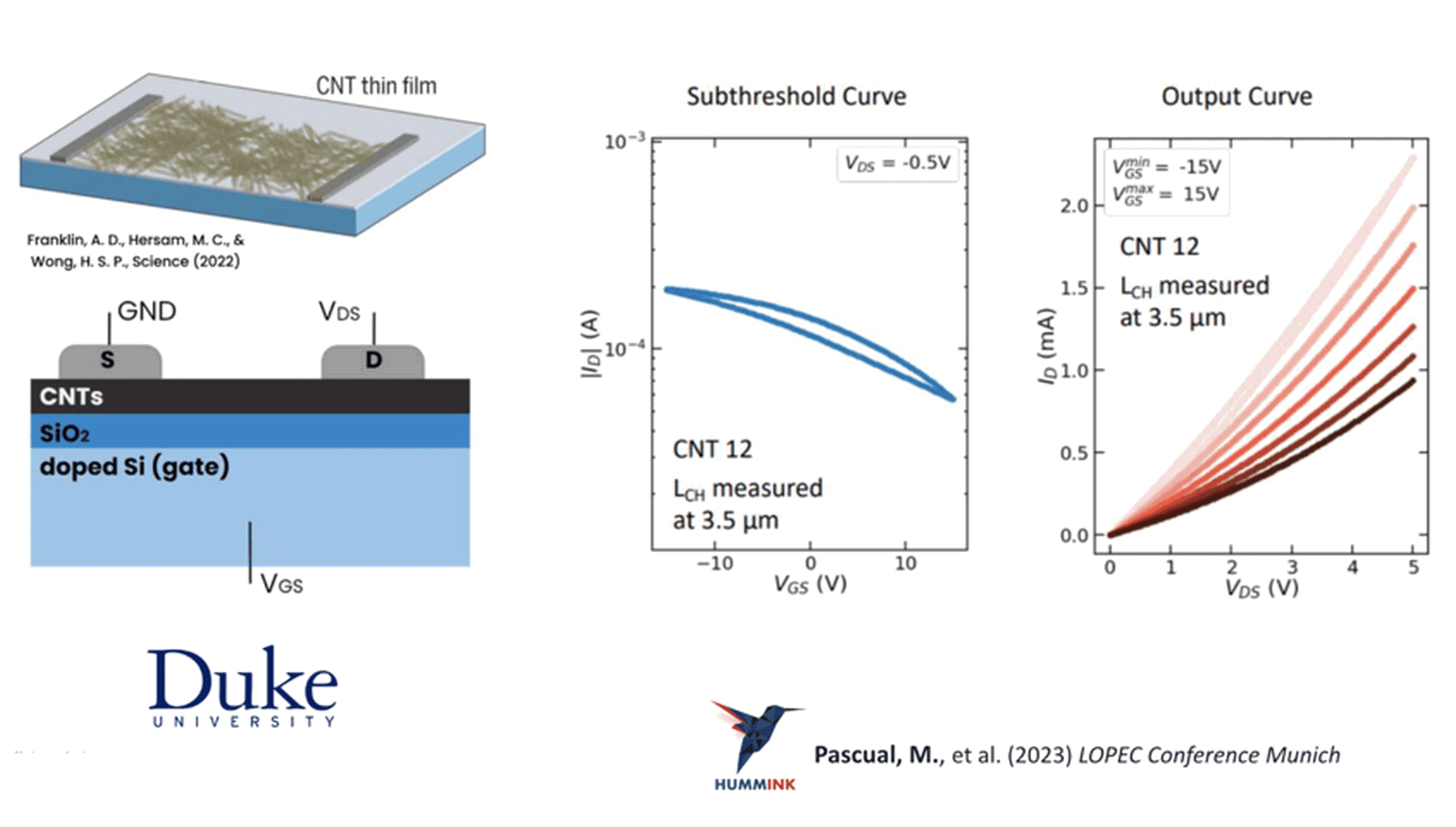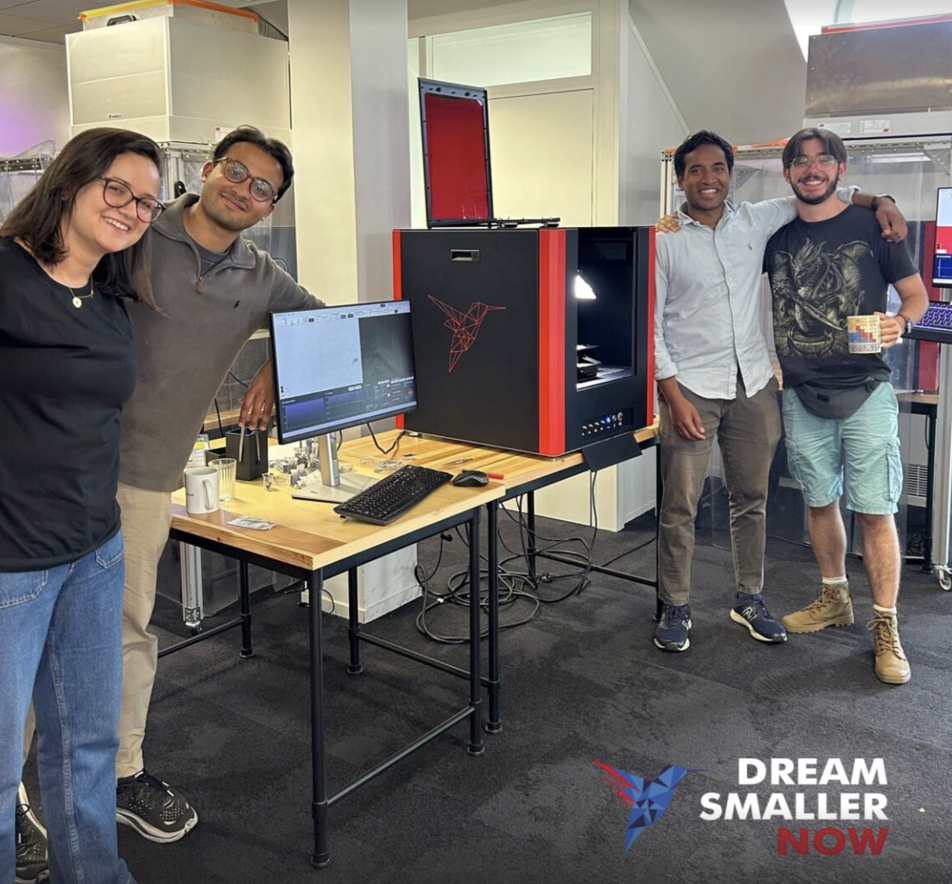HPCaP's Impact On The Future Of Healthcare

HPCaP is an advanced technology that leverages capillary forces to achieve exceptional precision in printing, making it ideal for the demanding applications within the medical field. In the sections below, we will explore how HPCaP is paving the way for new innovations in healthcare, from high-resolution sensors to the printing of living cells, demonstrating its vast potential and versatility.
High Precision Printing: The Cornerstone of Modern Bioelectronics
The Cornerstone of Modern Bioelectronics
Precision is paramount in the creation of bioelectronic devices, where even the slightest deviation can significantly impact performance. HPCaP technology stands out by printing at micron and submicron resolutions that were previously unattainable, all while maintaining unmatched precision. This capability has been instrumental in advancing research and development in the field of bioelectronics.
At Duke University, Dr. Aaron Franklin and his research team have harnessed the power of HPCaP to print silver electrodes with submicron gaps, achieving an impressive 500 nm separation for their carbon nanotube (CNT) transistors. This level of precision is crucial for the development of high-performance bioelectronic devices. The team's success didn't stop there; they have now progressed to fully printing CNT transistors; they’re using HPCaP to print both the electrodes and the CNTs.
One of the standout features of HPCaP is its versatility in printing on both rigid and flexible substrates. While Duke University initially focused on silicon wafers, they have since expanded their research to include flexible substrates like Kapton. This flexibility is particularly relevant to the medical field, where wearable sensors including biosensors often require substrates that can conform to the body's contours. The ability to print on such diverse surfaces makes HPCaP an invaluable tool for the development of next-generation medical sensors.
Biosensors:
The Key to Advanced Healthcare Solutions
As the healthcare industry increasingly leans toward personalized medicine, the need for advanced biosensors that can provide real-time, accurate data has become more critical. Biosensors are instrumental in monitoring a wide range of physiological parameters, from glucose levels in diabetics to detecting early signs of disease. The precision of these sensors can directly influence the quality of care a patient receives, making their development a top priority.
HPCaP technology is uniquely suited to meet these demands. Its ability to print with high precision on a variety of substrates allows the manufacturing of highly sensitive and accurate biosensors. This capability was demonstrated with the The Interfaces Treatments Organization and Systems Dynamics laboratory – ITODYS at Université Paris Cité in their recent development of transistor based biosensors. HPCaP is being employed to print the EGOFETs (Electrolyte-gated Organic Field Transistors) and achieve a small distance between the electrodes as small as 500 nm.
Such sensors are capable of detecting minute changes in the body's biochemistry, providing invaluable data that can inform treatment decisions and improve patient outcomes. With HPCaP not only highly accurate sensors can be developed but also ones capable of being integrated into wearable devices, making them ideal for continuous monitoring in real-world conditions. The implications of this technology for personalized medicine are profound, offering the potential to tailor treatments to individual patients' needs more.
Upcoming Webinar
This webinar focuses on the role of metallic tracks in printed electronics and how the Hummink NAZCA High Precision Capillary Printer (HPCaP) revolutionizes the process. The HPCaP technology offers high precision and resolution in printing silver ink formulations, which are optimized for slow drying to reduce clogging. Nicolas Battaglini, an associate professor at Université Paris Cité, will highlight key features of the technology, including its ability to control silver track dimensions and facilitate rapid prototyping of metallic electrode arrays. These micrometer-scale electrodes can be integrated into microfluidic systems for tasks such as particle identification, sorting, and filtering without the need for membranes.
HPCaP Process Explained by HUMMINK
Understanding the technology behind High Precision Capillary Printing (HPCaP) by HUMMINK
A Versatile Tool for Bioprinting and Beyond
One of the most exciting aspects of HPCaP technology is its versatility in printing a wide range of materials, including conductive inks like gold and silver, polymers, quantum dots and even living cells. This capability opens up new possibilities in the field of bioprinting, where the ability to precisely position cells can lead to breakthroughs in tissue engineering, regenerative medicine, and microbiome research.
At the Department of Infectious Disease at Imperial College in London, Dr. Ravinash Krishna Kumar and his team have been exploring the potential of HPCaP for creating spatially structured cell communities. Their work focuses on understanding the fundamental principles of how to build productive and diverse microbial communities, which could have far-reaching implications for both healthcare and environmental applications.
One of the key challenges in this research is the ability to print high-resolution patterns of cells, patterns with diameters typically less than 50 micrometers. Traditional printing equipment has struggled to achieve the necessary resolution, prompting the team to explore HPCaP as a solution. Working closely with Hummink, the team successfully printed E. coli bacteria in various patterns and resolutions. This capability could significantly advance our understanding of the structure of microbial communities and their applications in healthcare.
From high-resolution sensors and wearable devices to implants and even the printing of living cells, the possibilities are vast. HPCaP's ability to print on diverse substrates and with a wide range of materials makes it a versatile tool that can be adapted to a myriad of healthcare needs.
As the technology continues to evolve, we can expect to see even more innovative applications emerge, including the potential for drug delivery systems and advanced tissue engineering. The future of healthcare is bright, and with HPCaP, we are one step closer to realizing its full potential. Hummink is committed to pushing the boundaries of what's possible, and we are excited to see how HPCaP will continue to shape the future of medicine.
HUMMINK - We Are Exhibiting!
Visit our booth at the flagship TechBlick event in Berlin on 23-24 October 2024.
Let's RESHAPE the Future of Electronics together, making it
Additive, Sustainable, Flexible, Hybrid, Wearable, Structural, and 3D.
Related Articles

Multi-Material 3D Printing: A Transformative Breakthrough In Manufacturing










